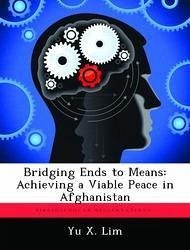With a viable state of peace remaining an elusive outcome after eight years in Afghanistan, reappraising the American strategy is now an utmost priority. Adopting the 'ends' -- 'ways' -- 'means' construct from Operational Design, this paper proposes a revised set of end states and strategy recommendations commensurate with the resources at hand. To begin, an evaluation of the 'means' at hand reveals a number of hard truths. First, from both operational sustainability and fiscal perspectives, open-ended military escalation is no longer a feasible option. Second, even with the drawdown of Iraqi forces underway, bolstering counterinsurgency forces in Afghanistan will require substantial additional investments in terms of training and equipment, and take more time than anticipated. Last, civilian capacity--a crucial component of nation building--will be lacking, at least in the short term. Constrained by limited resources, U.S. ambitions must be adjusted without compromising the vision of enduring peace in Afghanistan and the larger goal of combating terrorism.
Hinweis: Dieser Artikel kann nur an eine deutsche Lieferadresse ausgeliefert werden.
Hinweis: Dieser Artikel kann nur an eine deutsche Lieferadresse ausgeliefert werden.








